Showing Spotlights 89 - 96 of 331 in category All (newest first):
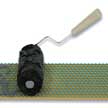 Researchers demonstrate that the amorphous carbon contaminants on CVD-produced graphene, which could greatly degrade its properties, can be removed by an activated carbon-coated lint roller, relying on the strong interactions between the amorphous carbon and activated carbon. Large-area graphene surfaces treated with this lint roller exhibit a high cleanliness of 99% with a low degree of polymer residue after transfer onto a functional substrate. This superclean graphene has extremely low contact resistance and ultrahigh carrier mobility.
Researchers demonstrate that the amorphous carbon contaminants on CVD-produced graphene, which could greatly degrade its properties, can be removed by an activated carbon-coated lint roller, relying on the strong interactions between the amorphous carbon and activated carbon. Large-area graphene surfaces treated with this lint roller exhibit a high cleanliness of 99% with a low degree of polymer residue after transfer onto a functional substrate. This superclean graphene has extremely low contact resistance and ultrahigh carrier mobility.
Sep 26th, 2019
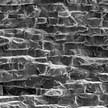 To make epoxy-graphene nanocomposites, the graphene nanosheets are commonly mixed homogeneously with the epoxy matrix. However, one of the problems that bedevils these nanocomposites is the issue of agglomeration of the nanofillers. Researchers now report that they have sucessfully tackled this dispersion problem by constructing a continuous graphene-based scaffold. The results show that the team's novel strategy boosts the fracture toughness to about 3.6 times that of pure epoxy.
To make epoxy-graphene nanocomposites, the graphene nanosheets are commonly mixed homogeneously with the epoxy matrix. However, one of the problems that bedevils these nanocomposites is the issue of agglomeration of the nanofillers. Researchers now report that they have sucessfully tackled this dispersion problem by constructing a continuous graphene-based scaffold. The results show that the team's novel strategy boosts the fracture toughness to about 3.6 times that of pure epoxy.
Sep 25th, 2019
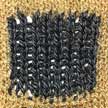 MXenes' inherently good conductivity and excellent volumetric capacitance makes them a very attractive material for fabricating textile-based, wearable electronics (e-textiles) that can be worn like everyday garments. This requires the fabrication of conductive yarns that are robust enough to be suitable for the wear and tear experienced by everyday textiles. A new study demonstrates highly conductive MXene-based yarns that can be washed and knitted just like conventional yarns - offering a potential platform technology for e-textile-based devices with tunable performance.
MXenes' inherently good conductivity and excellent volumetric capacitance makes them a very attractive material for fabricating textile-based, wearable electronics (e-textiles) that can be worn like everyday garments. This requires the fabrication of conductive yarns that are robust enough to be suitable for the wear and tear experienced by everyday textiles. A new study demonstrates highly conductive MXene-based yarns that can be washed and knitted just like conventional yarns - offering a potential platform technology for e-textile-based devices with tunable performance.
Sep 11th, 2019
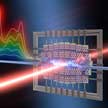 By studying flexible and transparent photodetectors based on single-layer MoS2 under the application of biaxial strain, researchers have developed atomically thin photodetectors whose characteristics can be controlled by means of an externally applied strain. This strain can be reversibly applied through the thermal expansion (shrinkage) of the substrate material, which induces tensile (compressive) biaxial stress. These results emphasize the possibilities of a new kind of electronics - straintronics - in which mechanical deformations are used to modify not only the geometry of the device, but its properties and performance as well.
By studying flexible and transparent photodetectors based on single-layer MoS2 under the application of biaxial strain, researchers have developed atomically thin photodetectors whose characteristics can be controlled by means of an externally applied strain. This strain can be reversibly applied through the thermal expansion (shrinkage) of the substrate material, which induces tensile (compressive) biaxial stress. These results emphasize the possibilities of a new kind of electronics - straintronics - in which mechanical deformations are used to modify not only the geometry of the device, but its properties and performance as well.
Aug 22nd, 2019
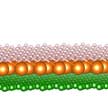 The latest addition in exciting properties of 2D materials has been superconductivity - the complete absence of resistance at low temperatures - clearly exciting for dissipationless (low-power, heating free) electronics. Researchers hypothesized that a layer of hydrogen adatoms could strongly alter the electronic and vibrational features of an atomically thin material, thereby boosting its superconductivity. This idea was tested on a monolayer of magnesium diboride, where hydrogenation was demonstrated to elevate the temperature to where superconductivity appears above a hundred Kelvin - several times higher than in the absence of hydrogen.
The latest addition in exciting properties of 2D materials has been superconductivity - the complete absence of resistance at low temperatures - clearly exciting for dissipationless (low-power, heating free) electronics. Researchers hypothesized that a layer of hydrogen adatoms could strongly alter the electronic and vibrational features of an atomically thin material, thereby boosting its superconductivity. This idea was tested on a monolayer of magnesium diboride, where hydrogenation was demonstrated to elevate the temperature to where superconductivity appears above a hundred Kelvin - several times higher than in the absence of hydrogen.
Aug 20th, 2019
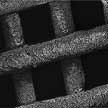 MXenes are a promising class of 2D materials with unique intrinsic physical and chemical properties, including excellent conductivity, hydrophilicity and high density when compared to graphene. 3D-printed architectures composed of MXenes are particularly attractive for energy storage applications such as rechargeable lithium- and sodium-ion batteries, lithium-sulfur batteries and supercapacitors. Researchers now have demonstrated for the first time the possibility to print three-dimensional freestanding MXene objects.
MXenes are a promising class of 2D materials with unique intrinsic physical and chemical properties, including excellent conductivity, hydrophilicity and high density when compared to graphene. 3D-printed architectures composed of MXenes are particularly attractive for energy storage applications such as rechargeable lithium- and sodium-ion batteries, lithium-sulfur batteries and supercapacitors. Researchers now have demonstrated for the first time the possibility to print three-dimensional freestanding MXene objects.
Aug 6th, 2019
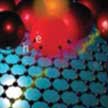 Among 2D materials, graphene is considered as one of the important components in many van der Waals (vdWs) heterostructure assemblies due to its high carrier mobility, good environmental stability, tunable work function, and mature processing technique. Besides the contact between different 2D atomic layers, the passivated, dangling-bond-free surfaces of 2D crystals can bond together with other dimensional materials through vdWs force. Consequently, fabrication of mixed-dimensional vdWs heterostructures could be carried out through hybridizing 2D crystals with 0D dots or particles, 1D nanostructures, or 3D bulk materials.
Among 2D materials, graphene is considered as one of the important components in many van der Waals (vdWs) heterostructure assemblies due to its high carrier mobility, good environmental stability, tunable work function, and mature processing technique. Besides the contact between different 2D atomic layers, the passivated, dangling-bond-free surfaces of 2D crystals can bond together with other dimensional materials through vdWs force. Consequently, fabrication of mixed-dimensional vdWs heterostructures could be carried out through hybridizing 2D crystals with 0D dots or particles, 1D nanostructures, or 3D bulk materials.
Jul 29th, 2019
 Recently, the investigation of ternary layered compounds with 2D features has emerged. Compared to 2D elements and binary compounds, ternary layered compounds possess more tunability for physical and chemical properties due to more element species. Therefore, exploring the preparation methods and special properties of 2D ternary compounds is of great significance for enriching the 2D material library and expanding the application of 2D materials.
Recently, the investigation of ternary layered compounds with 2D features has emerged. Compared to 2D elements and binary compounds, ternary layered compounds possess more tunability for physical and chemical properties due to more element species. Therefore, exploring the preparation methods and special properties of 2D ternary compounds is of great significance for enriching the 2D material library and expanding the application of 2D materials.
Jul 5th, 2019
 Researchers demonstrate that the amorphous carbon contaminants on CVD-produced graphene, which could greatly degrade its properties, can be removed by an activated carbon-coated lint roller, relying on the strong interactions between the amorphous carbon and activated carbon. Large-area graphene surfaces treated with this lint roller exhibit a high cleanliness of 99% with a low degree of polymer residue after transfer onto a functional substrate. This superclean graphene has extremely low contact resistance and ultrahigh carrier mobility.
Researchers demonstrate that the amorphous carbon contaminants on CVD-produced graphene, which could greatly degrade its properties, can be removed by an activated carbon-coated lint roller, relying on the strong interactions between the amorphous carbon and activated carbon. Large-area graphene surfaces treated with this lint roller exhibit a high cleanliness of 99% with a low degree of polymer residue after transfer onto a functional substrate. This superclean graphene has extremely low contact resistance and ultrahigh carrier mobility.
 Subscribe to our Nanotechnology Spotlight feed
Subscribe to our Nanotechnology Spotlight feed





